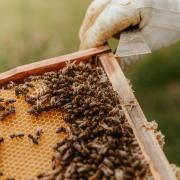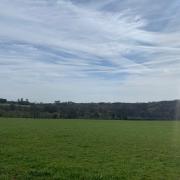
From “peng” to “bants”, modern slang has taken on a life of its own. It has even been referred to as its own language, incomprehensible to the adult members of society. English has evolved throughout the country to result in an entirely new set of vocabulary with its own new and distinct definitions. This evolution of language has been happening for millennia, and will certainly continue to occur. From Latin to Old English to slang, humans have refined their methods of communication to involve today over 170,000 words, and across the globe thousands of languages have emerged and developed too. However this begs the question: how did language come to exist in the first place?
It is almost unanimously agreed that it all began with the grunts and noises of cavemen sitting around a fire, not unlike the communication we see today in pack animals such as wolves. The need for language arose from the need for communication; humans have always been social animals and not only crave but require co-operation among a group in order to survive. This line of thinking has resulted in a theory of how language evolved: natural selection. It is known that our brain size is significantly larger than that of our predecessors, and therefore this allowed more complex cognitive function to occur, including language. The humans better able to communicate with each other could find water faster, hunt more successfully, utilise tools together to build shelter. Therefore they outcompeted those unable to do so, and as our brains evolved, as did our language until eventually it comprised of modern day complex constructions such as tense markers, relative clauses and complement clauses. One of the most fascinating aspects of this is that even a young child can learn to speak simply by listening!
This process of language evolution may have begun from simply a grunt to signify that a deer is nearby. However gradually a protolanguage that was made up of rudimentary phrases may have developed, involving stringing multiple words together, such as “deer ahead”. This phrase contains only two words but is vastly more effective than simple “deer” as it details its proximity to the hunters. In fact this type of protolanguage can be seen in two-year olds and in the initial efforts of adults attempting to learn a new language. Therefore this theory is very plausible.
On the other hand some argue that language is a result of exaptation: an adaptation being used for something that was not its original purpose, or in very simplified terms, it was a “side-effect” of other evolutionary advancements in the human brain. These scientists argue that as natural selection favoured adaptations more directly advantageous in the brain such as the abilities of tool making and rule learning, the areas that developed to enhance these functions just so happened to also advance the ability of being able to use language. These two theories are not mutually exclusive, though. They may have occurred in conjunction with each other, allowing humans to begin to use language.
However it is difficult to even agree on what was the beginning of language. Some consider the proto-language, which was used by the Homo habilis, the first language. Conversely others credit it to the Homo erectus. Many even claim that the first language surfaced much later, with the earliest groups of Homo sapiens. Tracking the evolution of language is also incredibly difficult, as it has no physical manifestation, although some fossil records are used to track the shape of the vocal tract (the mouth, tongue and throat). Before around 100,000 years ago, the vocal tracts did not allow the range of sounds and movements of the mouth used in speech today. However this does not mean language started then, as earlier language may have developed without the use of certain vowel sounds and consonants.
Another route scientists are taking is studying other primates’, particularly apes’ methods of communication to perhaps see what had happened to our own species in the very early stages of the development of language. However teaching apes the human language has produced intriguing but only rudimentary results. Ultimately, we are the only organisms with this complex and highly effective method of communication: an ability so unique and demanding such rigorous intellect that it very well may have played a crucial role in humans occupying the role they do today in the natural world. So perhaps the next time you make use of a slang word, perhaps give some thought to how that word came to be in the first place!
By Kinnary Patankar



























